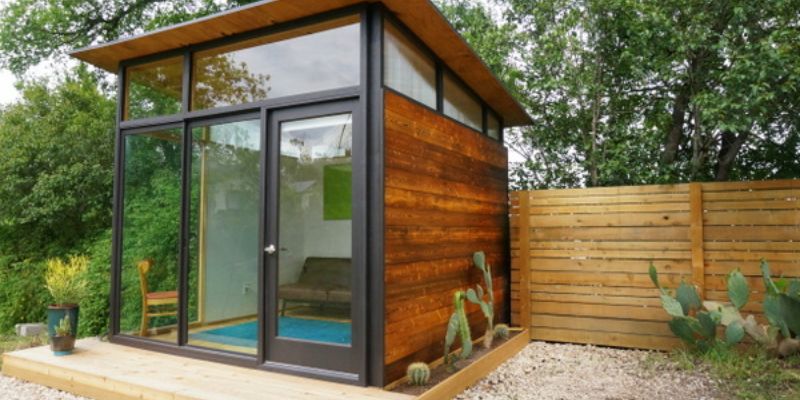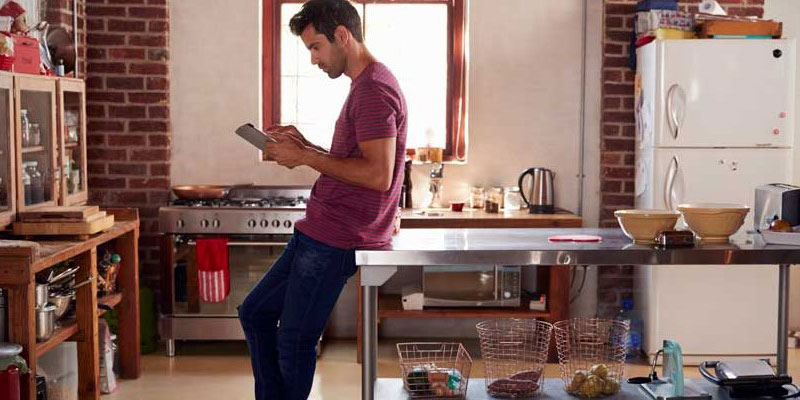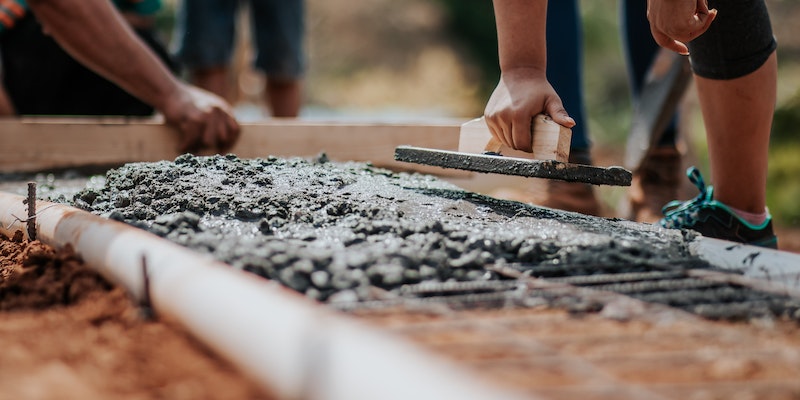Have you ever dreamed of living in a tiny house? Who hasn't, right? It's the perfect blend of convenience, affordability, and eco-friendly living. If you want to build your tiny abode from scratch, this post is for you. We have put together an extensive guide to get your project well underway.
From researching different building materials and regulations to creating creative designs that fit within specific space constraints, every step will be detailed here so you can move forward confidently toward creating the home of your dreams.
Set Your Budget

Before you begin, it's important to set a realistic budget. This budget should include the cost of materials, tools, and any extra labor needed during the building process. Make sure to account for unexpected costs, too.
Pick a Floor Plan

When picking a floor plan for your tiny house, consider a few things. First, you must choose one that meets your needs and budget. Many plans are available, from basic A-frame styles to more complex designs with multiple levels or separate rooms.
You should also consider the space you want in each room and the activities you’ll use your tiny home for, such as entertaining guests or working remotely. Finally, make sure the floor plan is within any zoning or building code regulations in your area so it will be considered legal.
Finance Your Tiny Home
Once you have your budget and floor plan set, it’s time to finance your tiny home. Depending on the size of your project and budget, this could involve a traditional mortgage, microloan, or other financing options. Shop around for the best rates and terms available to get the most out of your investment.
Purchase of Construction Materials
When purchasing construction materials for a tiny house, there are many things to consider. Buying quality products that will last and provide your home's desired look and feel is important.
Wood is a great option as it is durable and easy to work with. It also helps insulate your home from extreme temperatures, which can be especially useful in colder climates.
Other materials, such as metal or plastic, may also be suitable for certain projects. Please ensure all materials comply with local building codes before purchasing them so you don’t have any problems.
Prepare Your Trailer and Foundation
Before you can build your tiny home, it’s important to prepare the foundation and trailer upon which it will rest. The trailer should be chosen based on the size of your floor plan and local regulations. Typically, trailers are made from steel or aluminum and must meet certain specifications for weight-bearing capacity.
Once you have selected a trailer, investigate local laws for specific regulations that apply to its use. Next, construct a level surface as your home's foundation; this could involve laying down gravel or concrete blocks, depending on what is allowed in your area. With these steps completed, you’ll be well prepared to start constructing your tiny house.
Start Framing
Framing the tiny house is an exciting step in the building process! Not only does it allow you to create a unique layout, but it also helps define how your home will look and function. When choosing framing materials, consider durability, weight-bearing capacity, and any applicable local regulations.
Wood is often used due to its strength, affordability, and availability in different styles. If you want more natural options, straw bale walls can provide excellent insulation while reducing construction costs.
Once you have selected materials, start laying out your floor plan by connecting the wooden frame or other structural elements with nails or screws.
Install Siding, Roofing, Windows, and Doors
Installing siding, roofing, windows, and doors is essential to building a tiny house. The materials used should be chosen based on the budget, local regulations, and desired look. Wood is often favored for its versatility and affordability, while metal or plastic can also be used depending on individual needs.
When choosing a roofing material, it's important to consider factors such as insulation value, water resistance, and weight-bearing capacity. With style and function in mind, windows and doors should be selected; they should provide ample ventilation while protecting the home from weather elements.
Begin Rough-In for Utilities
Rough-in for utilities is an important step in building a tiny house. When roughing in the plumbing, electrical, and HVAC systems, you must ensure all connections are secure and compliant with local codes.
The best way to do this is to consult a qualified electrician or plumber who can accurately assess your needs and advise on the best materials and installation methods. Installing utility lines for water, gas, sewage, electricity, etc., also requires special care; check what type of piping may be necessary for your home's specific needs before starting any installation work.
With careful planning and professional help, rough-in for utilities will ensure that your tiny house has a strong foundation and reliable access to essential services.
Insulate Your Tiny Home
Insulating your tiny home is essential for year-round comfort and energy efficiency. There are a variety of insulation materials that can be used, from traditional fiberglass to spray foam or cellulose.
Each material offers advantages and disadvantages depending on the climate where you live, so it’s important to research which type would work best in your area.
For example, fiberglass is great for trapping heat in cold climates but isn’t as effective at blocking out heat in warmer regions. On the other hand, spray foam provides an airtight seal while also offering excellent soundproofing properties.
Add Appliances and Amenities
Once you have finished building your tiny home, it's time to add the appliances and amenities you need for comfortable living. Choose energy-efficient, space-saving, and durable appliances to withstand the bumps and jolts of life on the road.
Consider upgrading to solar-powered or propane options if available in your area. Consider other small features, such as a composting toilet or a rainwater harvesting system, that could help reduce your environmental footprint.
When designing the interior, focus on minimalism with plenty of storage solutions to maximize space while keeping clutter at bay.
Make Your Tiny House a Home
The final step in building your tiny home is making it feel like a home. Start by adding personal touches and decorating with items that are meaningful to you. Strings of twinkle lights or colorful bunting can add personality and whimsy to your space.
Consider growing indoor and outdoor plants to help bring nature into your small living space. Invest in quality bedding, towels, and other furnishings to ensure comfort and beauty.
FAQS
Is it cheaper to build a tiny house?
Building a tiny house can be more cost-effective than purchasing a traditional home, but the savings will depend on the materials and labor used. It costs around $25,000 to build a tiny house, compared to an average of $272,000 for a traditional-sized home.
Are tiny houses a good idea?
Tiny houses can be a great option for downsizing and simplifying their lifestyle. Tiny homes are typically much cheaper than traditional-sized homes, require less maintenance, and use fewer resources. Additionally, since tiny homes are often mobile, they offer a sense of freedom that regular homes cannot provide.
How long will a tiny house last?
The longevity of a tiny house will depend on the materials and construction methods used. Generally, a well-built tiny house should last at least 20 years with minimal maintenance. By taking proper care of your tiny home, you can extend its life even further.
Conclusion
Building a tiny house can initially seem overwhelming, but it can be manageable with appropriate research and preparation! Dedication, organization, and patience allow any budding dweller to eventually realize their dream. Furthermore, the simple lifestyle associated with tiny living offers tremendous benefits in terms of convenience, eco-friendliness, and financial savings. We hope this article has given you the necessary knowledge to build a tiny house.




